
John Foster|Accidental Mysteries
December 31, 2009
Accidental Mysteries
In celebration of children heading back-to-school this September, we explore the transition of the American reading book, from Colonial days to the emergence of the Dick and Jane series in the mid-20th century. These books are from the Richard L. Venezky Collection (1938 – 2004) at Stanford University.
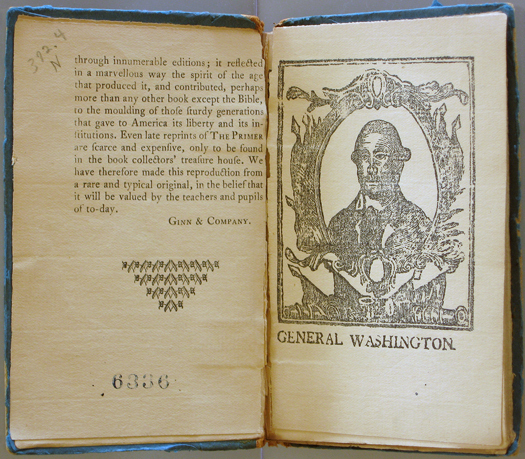
Starting in 1776, John Hancock’s picture in schoolbooks replaced King George’s. Later, George Washington would replace Hancock. (Venezky)

Woodcut of Washington (detail)
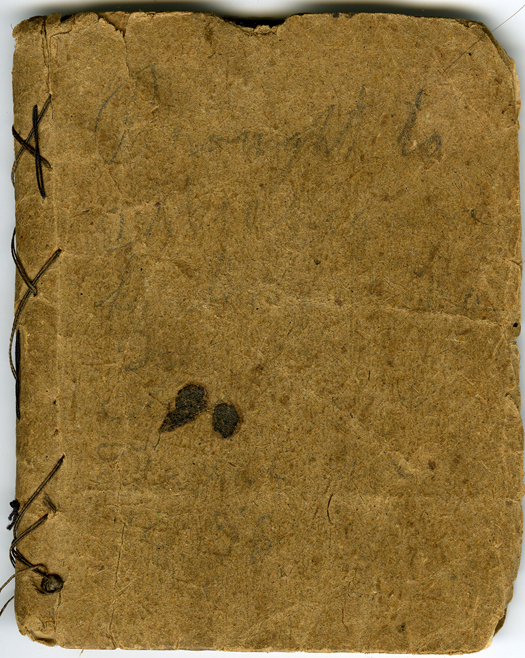
The 1830 New England primer: improved for the more easy attaining the true reading of English: to which is added the Episcopal and the Assembly of Divines’ catechisms: embellished with cuts. New Haven: S. Babcock, [1830?]. (Venezky)

The New England primer improved: c. late 18th century

Southern Primer, c. 1860; “Even though the quality of southern printing was inferior to that of the North, due to the lack of both good press equipment and high-quality paper, southern textbooks remain important sources of regional expression.” (Venezky)

“Perhaps the most successful of the series issued after the Civil War was the Appleton School Readers. This series represents what is probably the first modern, corporately sponsored reading program.” (Venezky)

Monroe, Lewis B. [1871-73?]. The Sixth Reader. Philadelphia : Cowperthwait & Co.
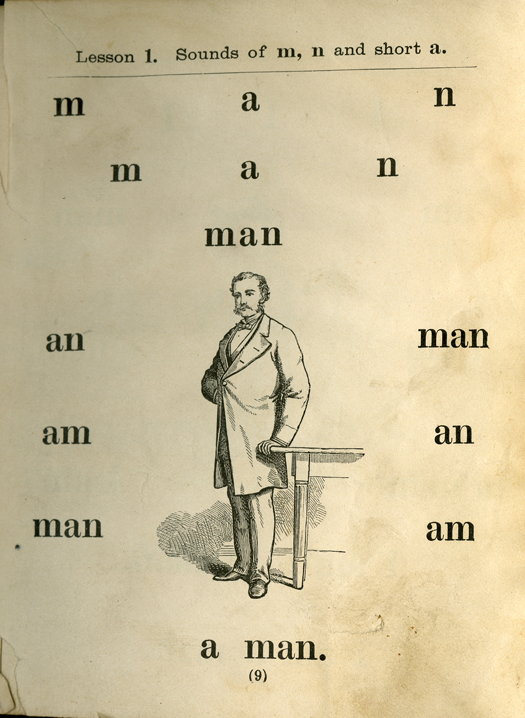
Page from a Monroe Reader: “The Monroe Readers mark the last gasp for reading instruction built around oral reading and elocutionary principles, and―with their accompanying teacher guide―the last step in the development of the scripted lesson plan.” (Venezky)

Early Modern Period: Fassett, James H. [1913-1923?]. The Beacon fifth reader. Boston: Ginn & Company.

Popular Series: McGuffey, William Holmes. 1920. McGuffey’s first eclectic reader. New York: American Book Co.

“In 1930 William S. Gray, a renowned educational psychologist and reading authority from the University of Chicago became a senior co-author with William H. Elson in creating the Dick and Jane series, first issued as the Elson Basic Readers in 1930-31.” (Venezky)
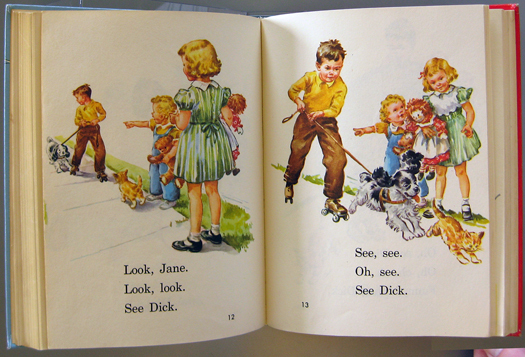
“The Dick and Jane series, issued by Scott, Foresman & Co., in the 1930s, remains today as the proto-typic American reading program of the 20th century.” (Venezky)
Accidental Mysteries is an online curiosity shop of extraordinary things, mined from the depths of the online world and brought to you each week by John Foster, a writer, designer and longtime collector of self-taught art and vernacular photography. “I enjoy the search for incredible, obscure objects that challenge, delight and amuse my eye. More so, I enjoy sharing these discoveries with the diverse and informed readers of Design Observer.”
Editor’s Note: All images are copyright of their original owners.
Observed
View all
Observed
By John Foster
Related Posts
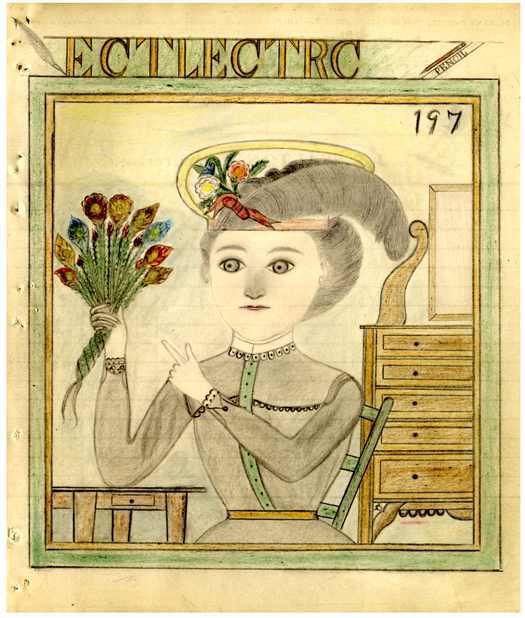
Accidental Mysteries
John Foster|Accidental Mysteries
The Remarkable Mr. Deeds
.jpg)
John Foster|Accidental Mysteries
Doug Rickard: N. A.
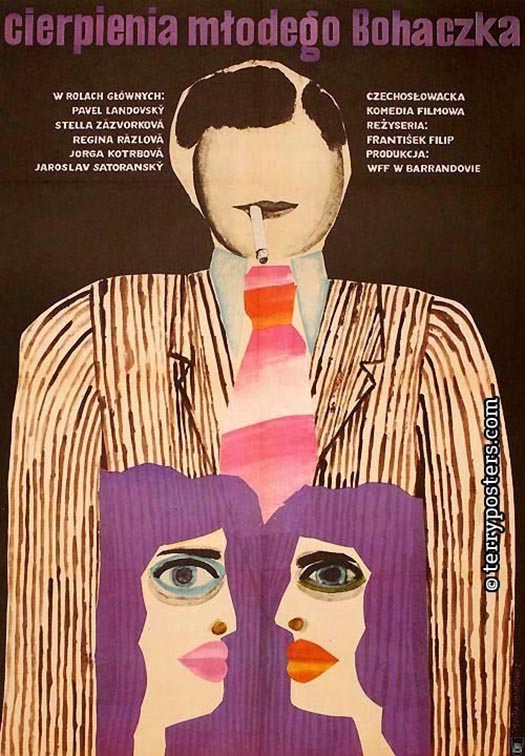
Accidental Mysteries
John Foster|Accidental Mysteries
An Archive of Czech Film Posters

Accidental Mysteries
John Foster|Accidental Mysteries
A Visual History of Lunchboxes
Recent Posts
Runway modeler: Airport architect Sameedha Mahajan on sending ever-more people skyward The New Era of Design Leadership with Tony Bynum Head in the boughs: ‘Designed Forests’ author Dan Handel on the interspecies influences that shape our thickety relationship with nature A Mastercard for Pigs? How Digital Infrastructure is Transforming Farming and Fighting PovertyRelated Posts

Accidental Mysteries
John Foster|Accidental Mysteries
The Remarkable Mr. Deeds
.jpg)
John Foster|Accidental Mysteries
Doug Rickard: N. A.

Accidental Mysteries
John Foster|Accidental Mysteries
An Archive of Czech Film Posters

Accidental Mysteries
John Foster|Accidental Mysteries


 John Foster and his wife, Teenuh, have been longtime collectors of self-taught art and vernacular photography. Their collection of anonymous, found snapshots has toured the country for five years and has been featured in Harper’s, Newsweek Online and others.
John Foster and his wife, Teenuh, have been longtime collectors of self-taught art and vernacular photography. Their collection of anonymous, found snapshots has toured the country for five years and has been featured in Harper’s, Newsweek Online and others.